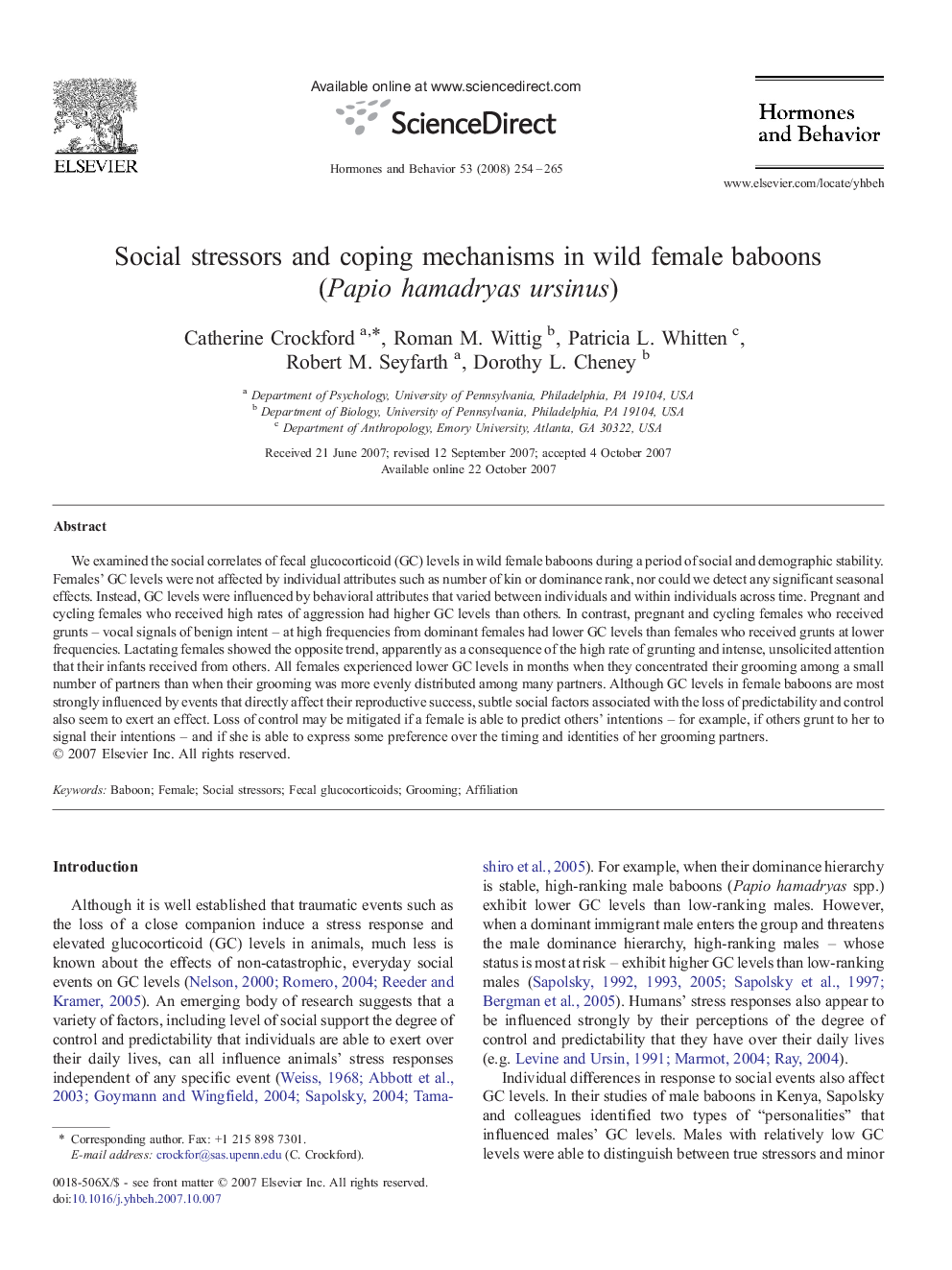| Article ID | Journal | Published Year | Pages | File Type |
|---|---|---|---|---|
| 10301392 | Hormones and Behavior | 2008 | 12 Pages |
Abstract
We examined the social correlates of fecal glucocorticoid (GC) levels in wild female baboons during a period of social and demographic stability. Females' GC levels were not affected by individual attributes such as number of kin or dominance rank, nor could we detect any significant seasonal effects. Instead, GC levels were influenced by behavioral attributes that varied between individuals and within individuals across time. Pregnant and cycling females who received high rates of aggression had higher GC levels than others. In contrast, pregnant and cycling females who received grunts - vocal signals of benign intent - at high frequencies from dominant females had lower GC levels than females who received grunts at lower frequencies. Lactating females showed the opposite trend, apparently as a consequence of the high rate of grunting and intense, unsolicited attention that their infants received from others. All females experienced lower GC levels in months when they concentrated their grooming among a small number of partners than when their grooming was more evenly distributed among many partners. Although GC levels in female baboons are most strongly influenced by events that directly affect their reproductive success, subtle social factors associated with the loss of predictability and control also seem to exert an effect. Loss of control may be mitigated if a female is able to predict others' intentions - for example, if others grunt to her to signal their intentions - and if she is able to express some preference over the timing and identities of her grooming partners.
Related Topics
Life Sciences
Biochemistry, Genetics and Molecular Biology
Endocrinology
Authors
Catherine Crockford, Roman M. Wittig, Patricia L. Whitten, Robert M. Seyfarth, Dorothy L. Cheney,
